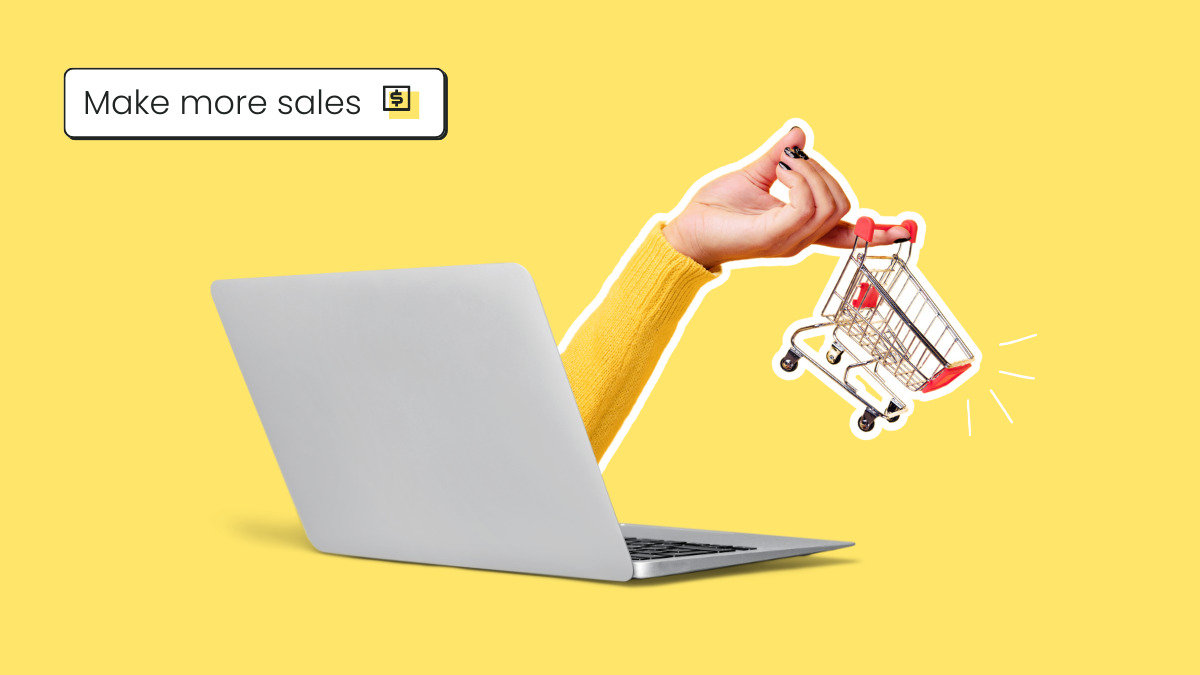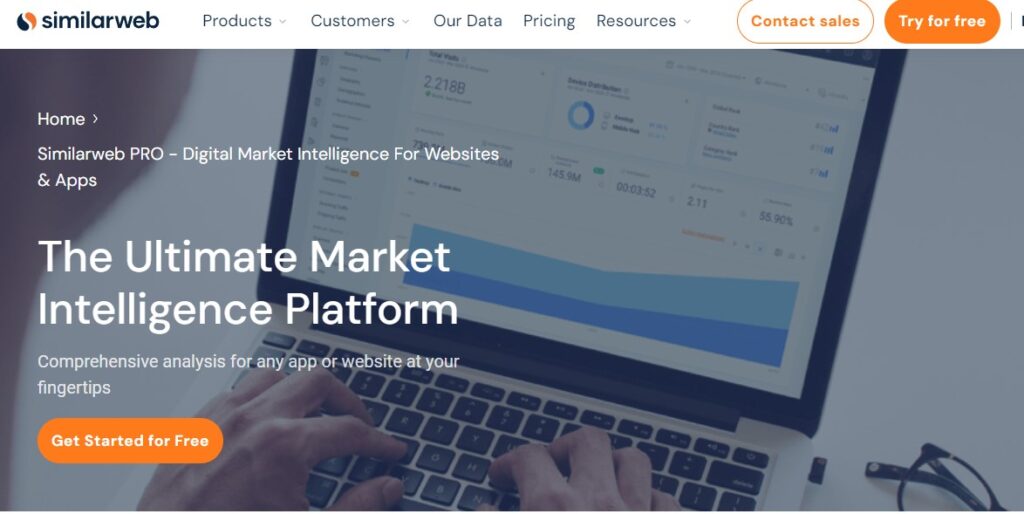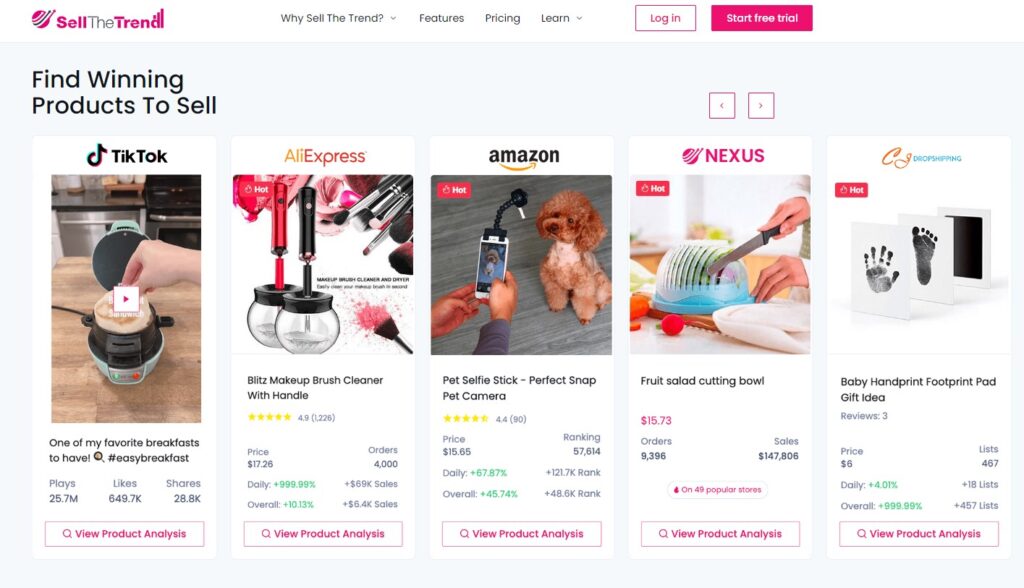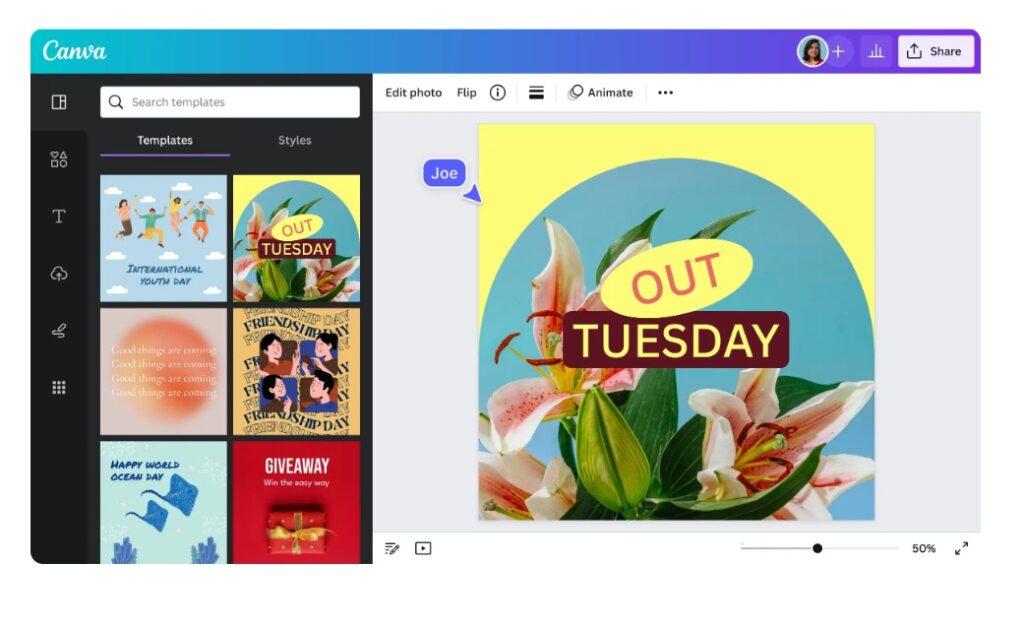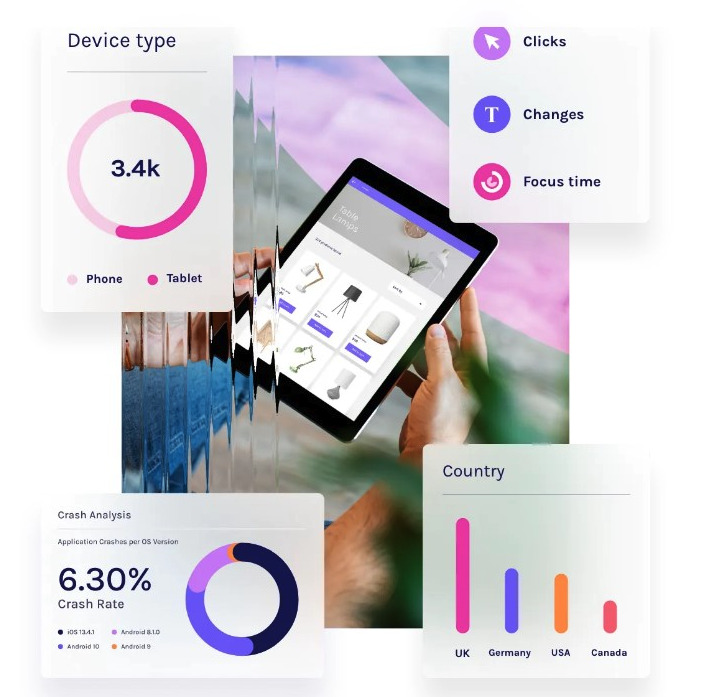Last Updated: January 29, 2024
Whether it’s a brand promotion, video, news update or even a meme, visual content rules the social media landscape. What has become so important is effectively conveying your brand on social media through images and video.
The visual face of your brand is oftentimes the first thing your audience sees and possibly the one thing they remember. It’s difficult to reuse the same image across all social networks unless you have a free social media image resizing tool like Landscape.

Sprout Social’s very own tool is free to use to resize, crop and scale social media image sizes. And along with our resizing tool, we’ve provided all the specific dimensions and a few quick tips to help you decide which image best fits each position.
Before we get into it, here are some additional resources:
- Easily reference this social media image sizes list in our always up-to-date Google Doc.
- Bookmark our social media video specs and ad guide!
- Download free social media images that are already optimized!
Easily manage multimedia content with Sprout
Sprout’s Asset Library simplifies publishing and asset management by providing you with a centralized location to store images, videos and text.
Quickly create, organize, edit and publish assets directly from the Asset Library to deliver on-brand, visually engaging posts for any connected social network.
Social Media Image Sizes Per Network
These links will make it easier for you to navigate to the specific social media image sizes per network:
Facebook Image Sizes
With 2.96 billion monthly active users, Facebook is the world’s largest social network. For that reason alone, it’s important to have attractive and engaging images that are optimized for the platform.
Remember that different devices, whether it’s mobile or desktop, render differently. Make sure that you are choosing dimensions based on where you want the majority of viewers to see your image.
Learn more about Facebook image sizes
Get specs and tips for implementing the best visual content on Facebook with these guides:
- Always up-to-date list of Facebook ad sizes & specs
- The Picture-Perfect Facebook Cover Photo Size
- Facebook Event Photo Size & Dimensions Guide
Facebook Profile Picture
Say cheese: your profile picture represents you or your brand on Facebook. This is the round photo that appears on your timeline layered over your cover photo. Your profile picture will also appear when you post to other walls, comment on posts or when your profile is searched.
Facebook profile picture image guidelines
- Recommended image size: 320×320 pixels
- Minimum file size: 180×60 pixels
- Displays:
- 176×176 pixels (desktop)
- 196×196 pixels (smartphones)
- 36×36 pixels (most feature phones)
- Recommended file type: JPG, PNG
- Profile pictures are cropped to a circle
Facebook Business Page Profile Picture
Facebook changed its Profile image for Business Pages to appear to the left side of the screen. The new look helps Facebook Business Pages follow a similar appearance as personal accounts. However, the dimensions are the same, but the photo appears on the page slightly different.
Facebook Business Page profile image guidelines
- Recommended image size: 320×320 pixels
- Minimum file size: 180×60 pixels
- Displays:
- 176×176 pixels (desktop)
- 196×196 pixels (smartphones)
- 36×36 pixels (most feature phones)
- Recommended file type: JPG, PNG
- Profile pictures are cropped to a circle
Facebook Profile and Business Page Cover Photo
Your Facebook cover photo will only appear on your Facebook timeline, and it stretches across the entire screen, which gives you more freedom to choose something creative or supplement your profile picture. Where your profile picture might be a good choice for a picture of you or a brand logo, use this space to post something that speaks more toward you as an individual or as a brand.
Facebook profile and Business Page cover photo image guidelines
- Ratio: 16:9
- Minimum required size: 400×150 pixels
- Recommended image size: 851×315 pixels
- Mobile display size: 640×260 pixels
- Max file size: 100kb
- Recommended file type: JPG, PNG
- Notes:
- The left side of your cover photo will be covered by your profile picture. On mobile, it could be 75% of your profile picture will overlap into the cover photo.
- Images with a logo or text may be best as a PNG file
- Business Page dimensions are exactly the same as personal accounts.
Facebook Shared Image
A shared image is one of the most common forms of sharing on Facebook. These images will always appear on your timeline, and ideally they will show up in most of your followers’ News Feeds — though with the Facebook algorithm determining which content will be served, it’s unlikely that everyone will see your post. The more people engage with your post, the more likely it is that the rest of your followers and their followers will see that activity.
Facebook shared image guidelines
- Recommended image size: 1080×1350 pixels
- Maximum file size: 8MB
- Recommended file type: JPG, PNG, GIF
- Appears in feed at a max width of 470 pixels (will scale to a max of 1:1)
- Appears on page at a max width of 504 pixels (will scale to a max of 1:1)
Facebook Shared Link
Another great tool in your Facebook belt is the ability to share a link. It’s very similar to posting a shared image, but it gives you even more fields to work with. You can choose to create a shared link with a small square image to the left and text on the right, or with a larger rectangular image on top with text underneath.
Facebook shared link image guidelines
- Recommended image size: 1080×1350 pixels
- Displays:
- 479×246 pixels (desktop)
- 320 pixel width (mobile)
- Minimum size: 200×200 pixels
- Maximum file size: 8MB
- Facebook will scale photos under the minimum dimensions. For better results, increase image resolution at the same scale as the minimum size.
Facebook Event Image
Facebook Events help capture the attention of users and cut through the noise on Facebook. Reminders are sent to your audience and having a good space with an even better image is important. Make sure you have the right dimensions down for a Facebook Event cover photo.
Facebook Event image guidelines
- Recommended image size: 1920×1005
- Facebook will scale down to minimum dimensions: 400×150 pixels
- Facebook recommends for best results, choose photos that are 400×150 pixels.
Facebook Fundraiser image
Facebook has added the ability to create a fundraiser for charitable organizations or personal causes. The cover photo for these fundraisers slightly varies from a typical Facebook cover photo, with a minimum size of 400×150. The best experience across many display types will come from a higher resolution image, though.
Looking for Facebook ad sizes?
Facebook ad formatting can be even more complex than organic posts, so for more guidelines, check out our complete guide to every Facebook ad size!
Find more information on the image sizes for Facebook, visit the Facebook Help Center.
Twitter Image Sizes
With 436 million monthly active users, Twitter is one of the social media networks that your customers will most often use to discuss your brand.
X (fka Twitter) Profile Photo
Your X profile photo is the main image that represents you or your brand across the network. It’s going to be seen across the site in a number of places by a number of people so make sure it’s of the highest quality. Here’s the places your profile photo will be visible on the site.
- On your page: The largest display of your profile picture is on your homepage and can be viewed by your followers as well as individuals who stumble upon your page.
- In-stream: A smaller version of your profile picture appears in a follower’s X stream every time you Post or are Reposted.
- Who to follow: Your profile picture is also going to appear next to a link to your page in the “Who to follow” box. This is located directly to the right of your X stream on desktop. Choose a recognizable image here.
X (fka Twitter) profile photo image guidelines
- Recommended image size: 400×400 pixels
- Maximum file size: 5MB
- Image types include: JPG, GIF or PNG
X (fka Twitter) Header Photo
Your header photo is the image that spans the top of your X profile page. It’s quite a bit larger than your profile photo so make sure to save it at the highest resolution possible. Because you have more room to be creative with this picture and it will likely be the first thing your visitors see, make it something captivating.
X (fka Twitter) header image guidelines
- Recommended image size: 1500×500 pixels
- Maximum file size: 5MB
- Recommended file type: JPG, GIF or PNG
X (fka Twitter) In-Stream Photos and Shared Links
X users can attach photos to any of their Posts. Depending on whether you’re attaching one or many photos or sharing a link, the way photos crop and display in stream will vary slightly.
Fortunately, in 2021, X made waves with #TwitterCropIsGone, eliminating the sometimes-unfavorable automated cropping for vertical images that had often become the subject of memes and in-jokes among users of the platform. Extremely wide or tall images with unusual dimensions may still get cropped, but for most images in standard 4:3 or 16:9 dimensions, you won’t have to worry as much about centering subjects around automated cropping.
The following are some best practices to get an optimal result, and you can also preview the end result in Sprout’s Compose window before you publish.
Recommended sizes for images by types of Posts:
- Recommended image sizes:
- Minimum: 600×335 pixels
- Landscape: 1024×512 pixels (minimum) and 1600×900 pixels (recommended)
- Square: 1080×1080 pixels
- Portrait: 1080×1350 pixels
- Recommended aspect ratio: 16:9
- Maximum file size:
- 5 MB for JPG, PNG on mobile and desktop
- 5 MB for GIFs on mobile
- 15 MB for GIFs on desktop
- Maximum number of images per post: 4 images
Find more information on in-stream photos at the X Help Center.
Instagram Image Sizes
Instagram is one of the most popular photo-sharing social networks. It’s the best place to showcase your visual creativity, even down to making a compelling grid out of the way your photos’ thumbnails display in sequence.
Instagram Profile Picture
Instagram is based on visuals, which should be an indication of how important it is to follow these image size guidelines. Ensure your profile image is recognizable so users can find you even easier through search or explore.
Instagram profile picture image guidelines
- Recommended image size: 110×110 pixels
- Recommended aspect ratio: 1:1, 4:5
Instagram Photo Size (Feed & Ad)
Because Instagram is all about sharing visual content – both images and videos – that appear in your followers’ feeds, it’s important to use higher resolution photos. Whether you’re posting natively in the app, via desktop or through a social media management tool, these guidelines below will help you put your best foot forward.
Instagram photo size (feed & ad) image guidelines
- Recommended image size: 1080×1080 pixels or 1080×1350 pixels
- Recommended minimum width: 1080 pixels
- Images with a width between 320 and 1080 pixels will be kept at the original resolution as long as it fits the recommended aspect ratio listed below
- If images are a lower resolution, Instagram will enlarge to a width of 320 pixels
- If images are a higher resolution, Instagram will shrink it to a width of 1080 pixels
- Recommended aspect ratio: 1.91:1 or 4:5
- Images will be cropped to fit a supported ratio
- Maximum file size: 8MB
- Recommended file type: JPG and PNG
- Maximum number of images per post: 10 images
Instagram Photo Thumbnails
When someone goes to your page, they’ll be presented with all of your content arranged in rows of thumbnails. These smaller renditions of your images and videos will expand when clicked and include a place for people to comment.
Instagram photo thumbnails image guidelines
- Thumbnails will appear at 161×161 pixels
- Recommended image width: 1080 pixel
- Feed aspect ratio: 1:1
Instagram Stories
Instagram Stories are a popular source of visuals on the app. There are both video and image options available to publish. And while this feature was originally meant to be ephemeral, it’s possible to upload your own content and build a strategy around Stories engagement.
Instagram Story image guidelines
- Recommended resolution: 1080×1920
- Minimum resolution: 150×150
- Aspect ratio: 9:16
- Aspect ratio for Instagram Story images published through Sprout: 4:5 to 1.91:1
For those looking for more info on Instagram ad sizes, including video specs, check out this guide!
TikTok Image Sizes
With 1 billion monthly active users, TikTok has grown considerably over the last few years. With nearly half its users under the age of 30, TikTok is becoming the social platform for younger target audiences.
TikTok Profile Image
All TikTok users have the option to upload a profile image to their accounts. This is the perfect opportunity for businesses to showcase their personalities through branding or to highlight a specific campaign.
TikTok profile image guidelines
- Minimum image size: 200×200 pixels
- Recommended file type: JPG, GIF or PNG
Looking for more TikTok specs? Our Always-Up-To-Date Video Specs guide can answer those questions.
LinkedIn Image Sizes
With 467 million registered users, LinkedIn is the world’s largest professional network. Where other social networks may be good drivers of traffic and customers, LinkedIn is a great place for you to source great employees and to connect with other industry leaders.
LinkedIn Personal Profile Image
LinkedIn started using a new layout for personal profiles and kept the box logo with company pages (more on that below). However, the personal profile dimensions for LinkedIn is very straightforward. This is the main image that represents you on your personal profile. So anytime someone takes a look at your profile for some quick info, this is the prominent image that represents you. It’s important to get the size right.
LinkedIn personal profile image guidelines
- Minimum image size: 268×268 pixels
- Recommended image size: 400×400 pixels
- Maximum file size: 3MB
- Recommended file type: JPG or PNG
LinkedIn Cover Image
LinkedIn’s background image is a newer feature for your personal profile. It’s a little bit trickier to find something that really fits that space well, but if you get it right, your profile will look great.
LinkedIn cover image guidelines
- Recommended image size: 1128×191 pixels
- Maximum file size: 3MB
- Recommended file type: JPG or PNG
LinkedIn Company Logo Image
One of the two brand logos that you should be uploading to LinkedIn is the standard company logo. This is the bigger of the two and is going to show up right next to your brand name on your LinkedIn homepage. This image also appears in the “Companies you may want to follow” section. The more enticing the photo, the more likely you’ll gain followers.
LinkedIn Company logo image guidelines
- Minimum image size: 268×268 pixels
- Recommended image size: 400×400 pixels
- Maximum file size: 3MB
- Recommended file type: JPG or PNG
LinkedIn Company Cover Image
Unlike the personal background image, the company or standard business background image covers the entire top of the page. The image appears much larger than the personal dimensions, giving businesses a bit more space.
LinkedIn Company cover image guidelines
- Recommended image size: 1128×191 pixels
- Maximum file size: 3MB natively
- Maximum file size: 5MB via Sprout
- Recommended file type: JPG or PNG
LinkedIn Shared Image or Link
This size works for LinkedIn posts that share a photo or a link with an image to a blog post or article to your company page’s feed.
LinkedIn shared image or link image guidelines
- Recommended image size for links: 1200×627 pixels, based on mobile scaling
- Recommended file type: JPG or PNG
LinkedIn Life Tab – Main Image & Company Photos
The Life tab on LinkedIn company pages lets you provide a more in-depth look at the day to day experience of your company’s employees. Currently, the two types of images you can upload here are the main image, which serves as a hero and highlight to your page, and the horizontal scrolling gallery of other company photos beneath.
LinkedIn Life tab image guidelines
- Recommended size for main image: 1128×376
- Recommended size for company photos: 900×600
- Recommended file type: JPG or PNG
- The Life tab only appears on the mobile app, and not the mobile web version of LinkedIn, so exact display sizes will vary by device. Upload the recommended size for the best experience.
Find more information in the LinkedIn Help Center.
Pinterest Image Sizes
Pinterest Profile Picture
When setting up your Pinterest account you have the option to do so using Facebook, Google or email. If you choose Facebook or Google, Pinterest will pull in the profile image that you have set there.
If you’re using email, or would prefer to use a different photo, you can do that too: just upload a square photograph (the larger the better) and Pinterest will resize it to fit. Like other social sites your profile picture on Pinterest should be something closely tied to you or your brand.
Pinterest profile picture image guidelines
- Recommended image size: 165×165 pixels
- Maximum file size: 10MB
- Recommended image type: JPG and PNG
Pinterest Pin Sizes
When adding a pin to your board, it’s important to remember that Pinterest puts a limit on the width of the image but not the length. This gives you the opportunity to add a photo that’s square or one that will scale to be even taller. Just remember to make sure you’re creating large images because they add more value, not just because you can.
Pinterest Pin sizes image guidelines
- Recommended image size: 735×1102 pixels
- Recommended ratio: 2:3
- Recommended file size: 20MB max, but only 10 MB when publishing via Sprout
- Recommended file type: JPG, PNG, GIF
- Note: Larger are resized to display at a width of 238 pixels with scaled height in feeds.
Text Guidelines
- Title character count: 100 characters max
- Textbox character count: 250 characters max
Pinterest Board Display
Creating boards is one of the most important things that you can do on Pinterest. Not only is it important to choose a photo that is enticing to your audience, it’s important to choose one that’s relevant to that particular board.
Pinterest Board display image guidelines
- Final display: 222×150 pixels (large thumbnail)
- Final display: 55×55 pixels (smaller thumbnail)
Find more information in the Pinterest Help Center.
YouTube Image Sizes
YouTube has more than 2.5 billion unique users every month and is available on hundreds of millions of devices. Millions of brands have already realized that YouTube is a great opportunity to reach their fan-base.
YouTube Channel Profile Image
YouTube allows you to select different profile image borders, but the dimensions stay the same. Ensure your YouTube has a profile image set up before you select your border.
YouTube Channel profile image guidelines
- Recommended image size: 800×800 pixels
- Minimum image size: 98×98 pixels
- Maximum file size: 4MB
- Recommended image files: PNG or GIF (no animations)
YouTube Channel Cover Photo
Spice up your YouTube channel with some “channel art.” When users click through your YouTube videos to your channel, some appealing images could entice them to stay on your page longer and watch more of your videos.
YouTube Channel cover photo image guidelines
- Recommended file size: 2560×1440 pixels
- Minimum file size: 2048×1152 pixels
- Safe area for mobile and web (without text and logo cropping): 1546×423 pixels
- Maximum file size: 6MB
- Recommended image files: PNG or GIF
Across Different Devices
There are a lot of different platforms and devices that users can stream YouTube on so it’s important that you review your creative across devices and confirm that the most important parts of your image, such as text or logos, are displaying legibly in the “safe zone” noted above.
Find more information in the YouTube Help Center.
YouTube Video Uploads
Uploading your content to YouTube is the one of the most important parts of establishing your presence on the site. Videos can tell viewers something about you as a person, or it could show off something that your business might offer.
YouTube video guidelines
- Videos must maintain a 16:9 aspect ratio. Smaller videos such as 4:3 will be pillarboxed to fit.
- YouTube Shorts must maintain a 9:16 aspect ratio and 1920×1080 pixels.
For more on the specifics of YouTube video optimization, or to size video on any other social network, check out our complete guide to social media video specs.
Google My Business Image Sizes
Google My Business has become an essential platform for businesses with local, brick-and-mortar presences to gain visibility and conduct their review management strategy.
Types of Images for Google My Business
- Logo: Your recognizable logo image. May not be available for all types of businesses–see Google guidelines for more detail.
- Cover photo: A photo of your business that will typically be the first one shown. Choose a photo that gives the best overall representation of your place of business for this photo.
- Business photo: You can use your other business photos to highlight different elements of your business or offices and help show off what local visiting customers should look for when they stop by.
For all three types of images, Google’s official guidelines recommend the below specs for the best appearance on the platform.
Google My Business image guidelines
- Recommended resolution: 720×720 pixels
- Minimum resolution: 250×250 pixels
- File size maximum: 5 MB
- Image file type: JPG or PNG
The post Always up-to-date guide to social media image sizes appeared first on Sprout Social.
from Sprout Social https://ift.tt/YkSNDC3
via IFTTT







